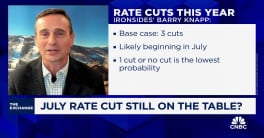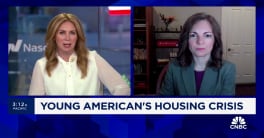Darned if I know how we're at the end of August already, with kids are heading back to school and the NFL all over sports programs. One thing that August had was a ruling in the federal bankruptcy court in the Royal Bank of Canada versus Thornburg Mortgage case: RBC Capital Markets LLC has to pony up $45 million in damages for undervaluing assets it seized from Thornburg. And tongues are wagging about the settlement between the SEC and two units of Citigroup: no one at the bank was held accountable for behavior that caused investors to lose an estimated $2 billion! If no one at the SEC has the figure out "who done it", maybe the CFPB will step in. (More on the CFPB below).
The Consumer Finance Protection Bureau has plenty of critics - more with its enforcement methodology than its purpose. Thanks for Brian B. for sending along a decent read on the problems, spelled out logically. "But, the terms 'unfair, deceptive or abusive'-even as defined in the Dodd-Frank Act-rely largely on the observer to offer a subjective opinion; and, the observer whom we are concerned with is not a judge and jury. Rather, it is the CFPB examiner, and the supervision and enforcement division."
The CFPB has not been idle on the constructive side of things (versus the enforcement side of things). Late last week it launched a suite of web-based materials designed specifically for real estate professionals to understand the Know Before You Owe mortgage disclosure rule. "The materials provide a guide for real estate professionals to ensure smooth and on-time closings while facilitating the best experience for their clients.
And don't forget that this year it presented five webinars on the TILA-RESPA Integrated Disclosures which answer a number of questions. "Those questions and answers are now more easily accessible through a new index that allows you to link directly to specific topics within each of the webinars."
It released a Spanish edition of "Your Home Loan Toolkit," the consumer guide that is designed to replace the current Settlement Cost booklet when the TILA-RESPA Integrated Disclosures rule goes into effect. Regardless of language, creditors must provide the Toolkit, referred to in the TILA-RESPA Integrated Disclosures rule as the "special information booklet," to mortgage applicants as a part of the application process.
There are about 41 million persons age five and older in the US that speak Spanish at home. This makes the US the 4th largest fourth largest Spanish-speaking nation behind Spain at 46 million, Columbia at 48 million and Mexico at 121 million. If you add children under 5 and those who speak some Spanish, the total rises to 52 million, making the US the world's second largest Spanish-speaking nation.
An LA Times article, "It's Official: Latinos Now Outnumber Whites in California" grabbed headlines a while back. The tally, released in late June, shows that as of July 1, 2014, about 14.99 million Latinos live in California, out numbering the 14.92 million whites in that state. The numbers are not only being fueled by recent immigration but by second and third-generation immigrants who are settling down and starting families. Maria Zywiciel, President of NAHREP Consulting Services (a marketing firm specializing in the Hispanic and Housing sector) said, "The numbers are compelling and demonstrate that the consumer base for housing demand is changing." According to NAHREP, in 2014, the number of Hispanic households grew by 320,000, accounting for 40% of total U.S. household growth and is expected to account for over 50% by 2020. That represents a huge "Oportunidad" for lenders that understand this segment.
When did "elderly" stop being used? I guess when it began to describe a good portion of the mortgage banking population. But let's get to Millennials since I haven't talked about them for over 90 minutes. Mike Fontaine, the CFO over at Plaza Home Mortgage, recently wrote a piece on dem youngsters for the California MBA's magazine - more specifically, how to nudge them into a career in buying houses. Uh, I mean a career in mortgage banking! Yes, a career in an industry that has been, and will be, the target for regulators and the press, in a small minority of cases where their parents lost their houses, and where no one wants to retire.
Mike points out that a training program is critical. Plaza has beefed up its e-learning department. Sounds more important than my training in capital markets: "Don't screw up, because it's expensive." Plaza's training includes "more than 500 learning modules, and social, reward and feedback mechanisms." But Mike also points out that the youngsters are accustomed to a more relaxed office environment, open door policies, casual dress, being able to "connect" 24/7, and accessing their personal device at work. [Insert joke about accessing my personal device when I started in this business.]
"Oh Lord, won't you buy me, a Mercedes Benz? My friends all drive Porsches, I must make amends." That doesn't appear to be the mindset of this generation. But when are they going to start borrowing big bucks to buy that loft in downtown Nashville, or the McMansion in Sacramento? How about when they save up a down payment after paying off student debt or dealing with underemployment? And it takes discipline - if you're fresh out of college are you going to invest your savings in the stock market? How about the bond market and earn 2%? Or cash and earn 0%? I'd be darned careful if I were them, and instead wear their parents down to provide a gift or down payment.
And as Mr. Fontaine points out, these rascally Millennials generally rate, or follow ratings on, products and services, they follow their friend's advice, care more about fast than friendly service, and pay attention to "user generated content on websites. "At Plaza we conclude that Millennials will seek the help of professional mortgage brokers when they need a loan, but will use friends and technology to vet their broker, rate them online, and share their purchase experience with others using a variety of means." So much for relying on parents for advice...
Certainly rents continue to push Millennials and other renters toward actually buying a place - assuming lenders offer programs that fit, or renters can actually save the tens (or hundreds) of thousands of dollars needed. That is becoming harder and harder, and the cost of renting a home is rising faster than wages across wide swaths of the country, a problem that has become especially acute in the past year, putting a big squeeze on many household budgets.
The Federal Reserve Bank of New York recently published results from the 2015 Survey of Consumer Expectations Housing Survey in order to obtain robust information regarding consumer's housing experience and expectations. The survey provides an in depth look at individuals' perceptions and expectations of growth in home prices, intentions regarding moving or buying a new home, their access to credit, etc. The survey found that individuals expect home prices to increase at a rate similar to last year and mortgage rates to increase in the near future, but at a modest pace. Most renters prefer owning if they had the necessary financial backing to do so and the majority of renters believe it would be challenging to get a mortgage. Results from the survey indicate that more than 60 percent of renters and owners believe that buying property in their zip code is a good investment, whereas 10 percent do not believe it would be a good investment. The average renter had a 58.8 percent chance of moving within the next 3 years as opposed to a 24.3 percent chance for an average owner. About 45.6 percent of renters said they would strongly prefer to own rather than rent, and among these, more than 70 percent cited access to financing as a primary hurdle.
Zelman & Associates published their July Apartment Survey indicating that continuous demand has pushed rents up. Blended rent growth increased YoY to 4.7 percent mainly due to new move-in growth of 4.9 percent. As rent prices increased, occupancy slightly dipped 20 basis points to 94.9 percent. Move outs due to raised rental prices increased to 9.6 percent in July, up from 8.2 percent in June and move-outs to purchase a home increased to 21.4 percent from 17.8 percent in June. Over the next year, 40 percent of survey respondents expect suburban to outperform, 35 percent expects consistent performance and 25 percent believe urban should outperform. National multifamily starts are expected to reach 378,500 in 2015, up 355,000 in 2014.
The rent trend is not new - the same thing was happening earlier this year. Back in April Zillow published an article on rental affordability, indicating that renters that are looking for a new home to lease should expect to pay about 30 percent of their income to their landlords, up from the historical 25 percent, whereas homeowners should expect to pay 15 percent of their income towards a mortgage payment. Metro areas in the South and Southwest (excluding Texas) seemed to be "just right", where there is strong job growth and affordable rent and moderate rental vacancy. The top cities where it's easiest to find a job and afford rent include Las Vegas, Phoenix and Jacksonville. West coast metros ranked as "too hot", where job growth is great but rental affordability is very low, such as Los Angeles, San Francisco and Seattle and many Texas cities. Detroit, Washington, D.C. and Pittsburgh were the metros among the "too cold" list, where rent may be inexpensive but job growth is poor. Finally, Boston, Philadelphia and Chicago are "just wrong", where rent is unaffordable and job growth is poor. Even then, in some cities, it appeared that buying a home is more affordable than renting.
Rates moved higher last week - why? You can blame the decent Personal Income and Spending figures, the possibility of further sales by the Chinese government to finance its support for the yuan, or renewed thinking that the Fed is still going to push short-term rates higher in September or October. Stanley Fischer, the Vice Chair of the Fed and an FOMC voter, said that "there was a pretty strong case" for September liftoff. But there are plenty who disagree.
The markets will have plenty of data this week. We start off slowly with the August Chicago PMI (09:45 EDT) & ISM Milwaukee today. Tomorrow we'll have August's ISM Index and Construction Spending. Wednesday 9/2 is the August ADP Employment Change, Q2 Productivity and Unit Labor Costs, July Factory Orders, and the September Fed Beige Book. Thursday is the August Challenger Job Cuts, Initial Jobless Claims, July Trade Balance, and August ISM Services. And who can ignore Friday's set of employment data with the Unemployment Rate, Nonfarm Payrolls, and Hourly Earnings? We wound up last week at a 2.19% yield on the 10-year and this morning we're at 2.16% with agency MBS prices better by roughly .125.







